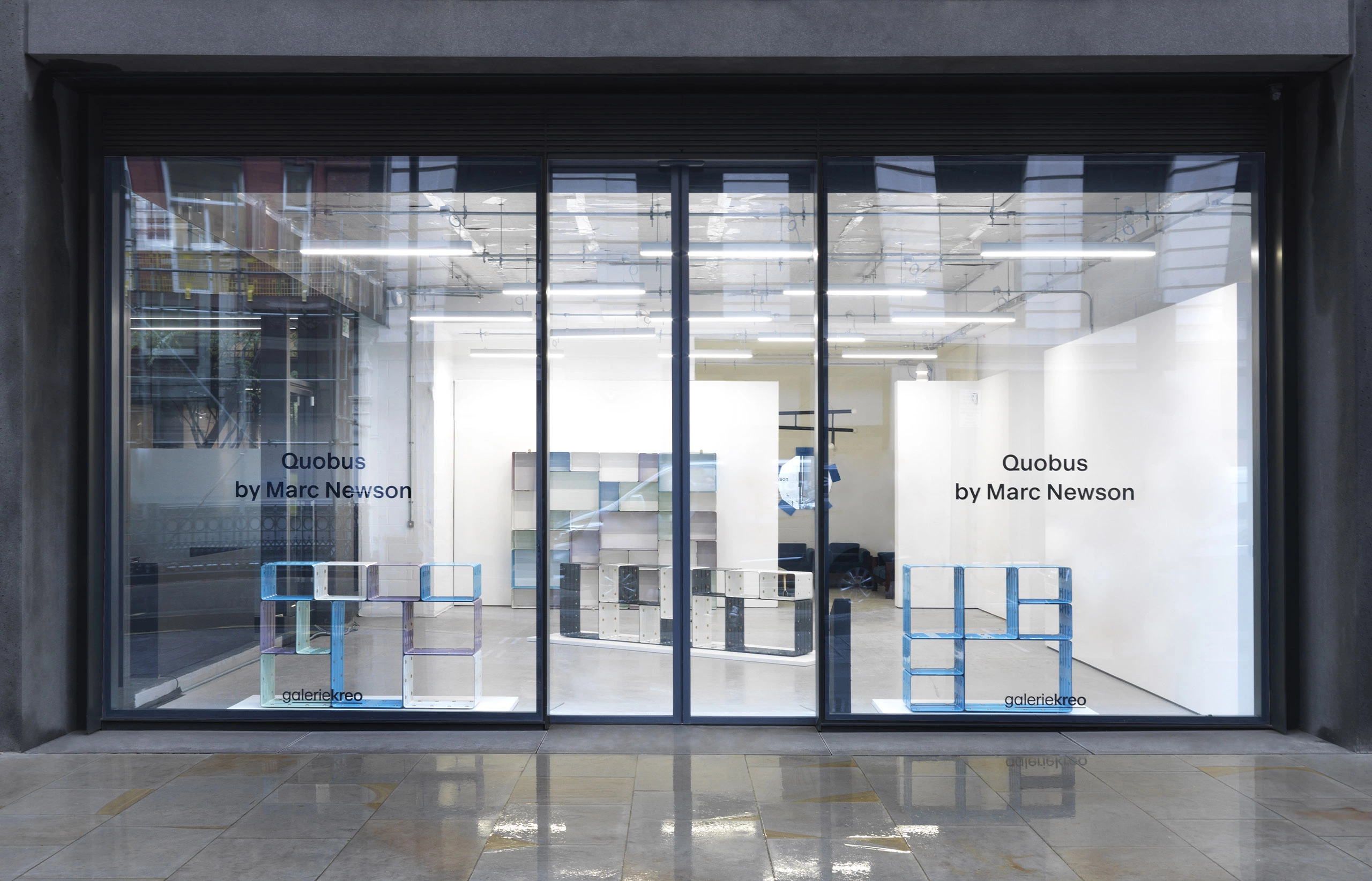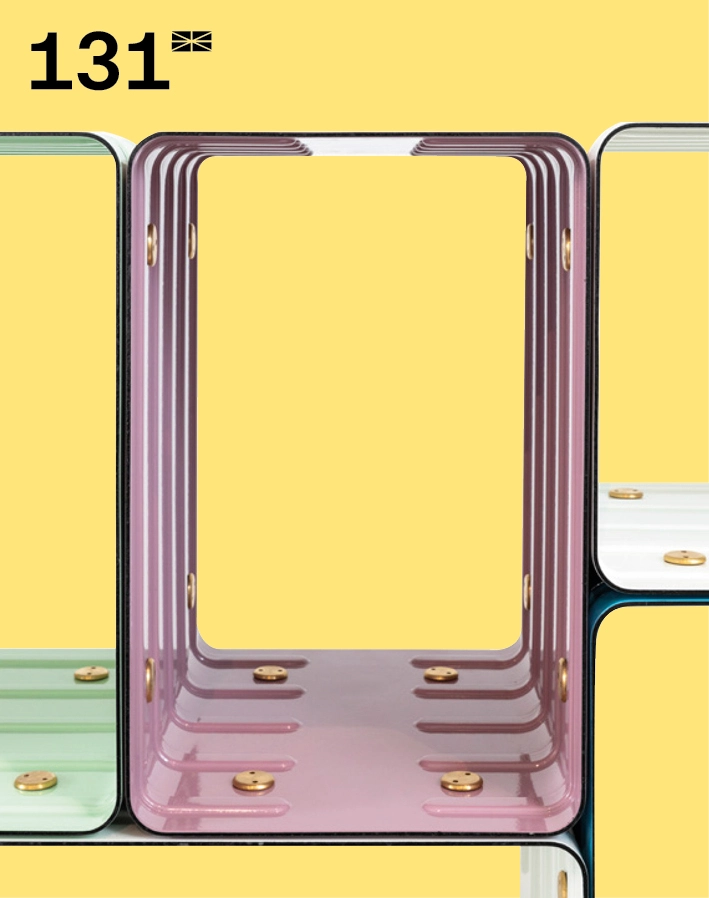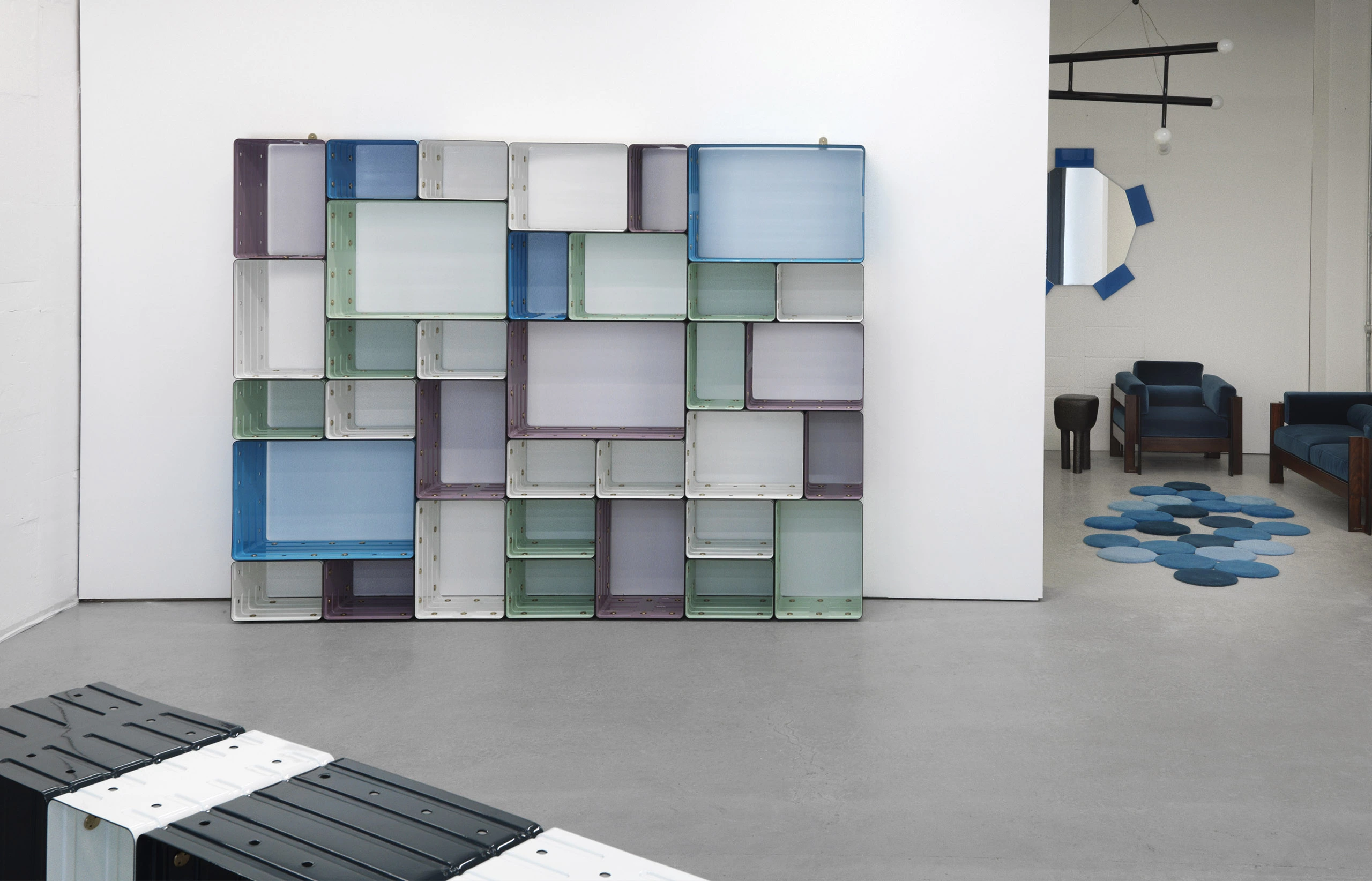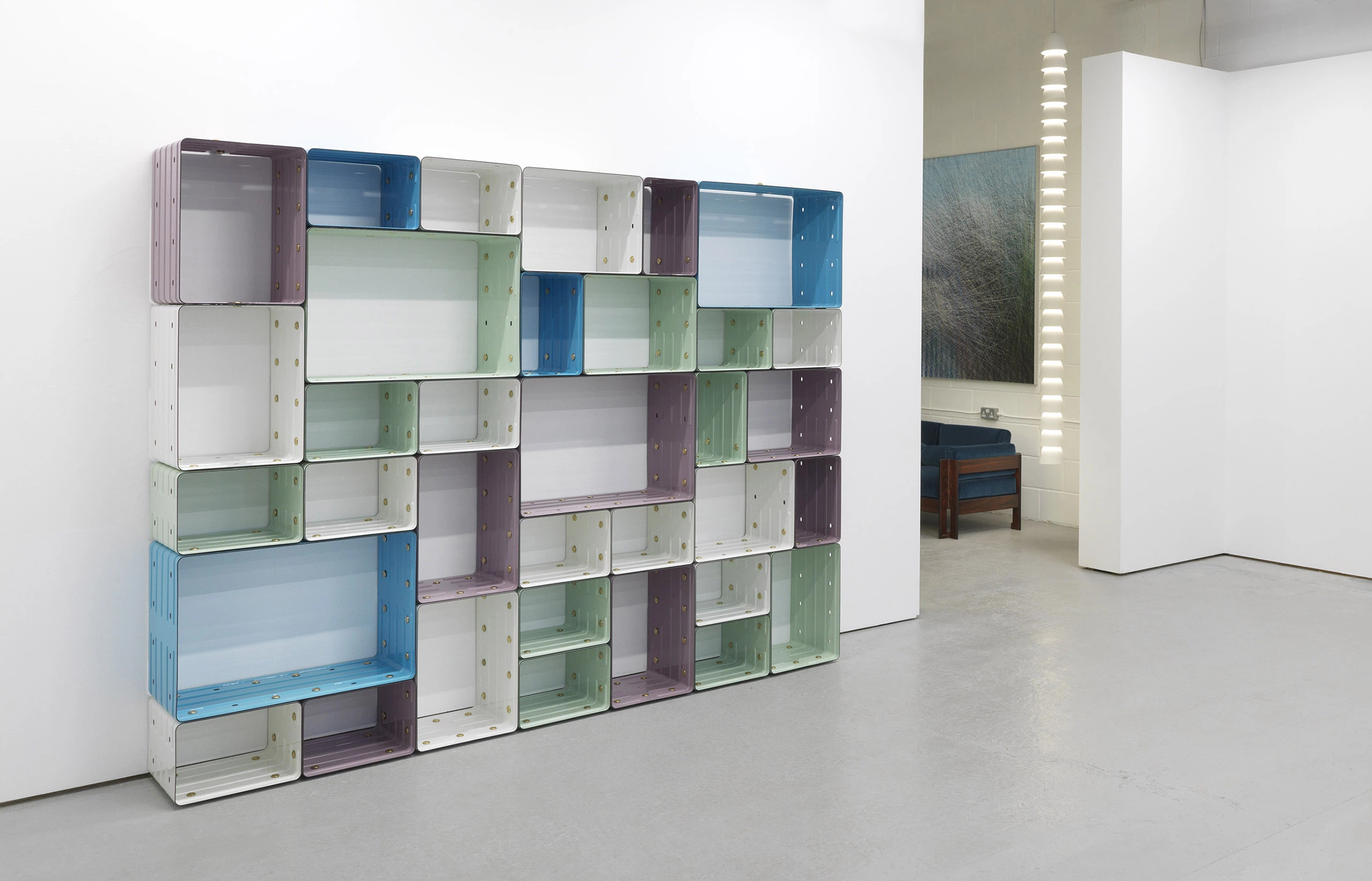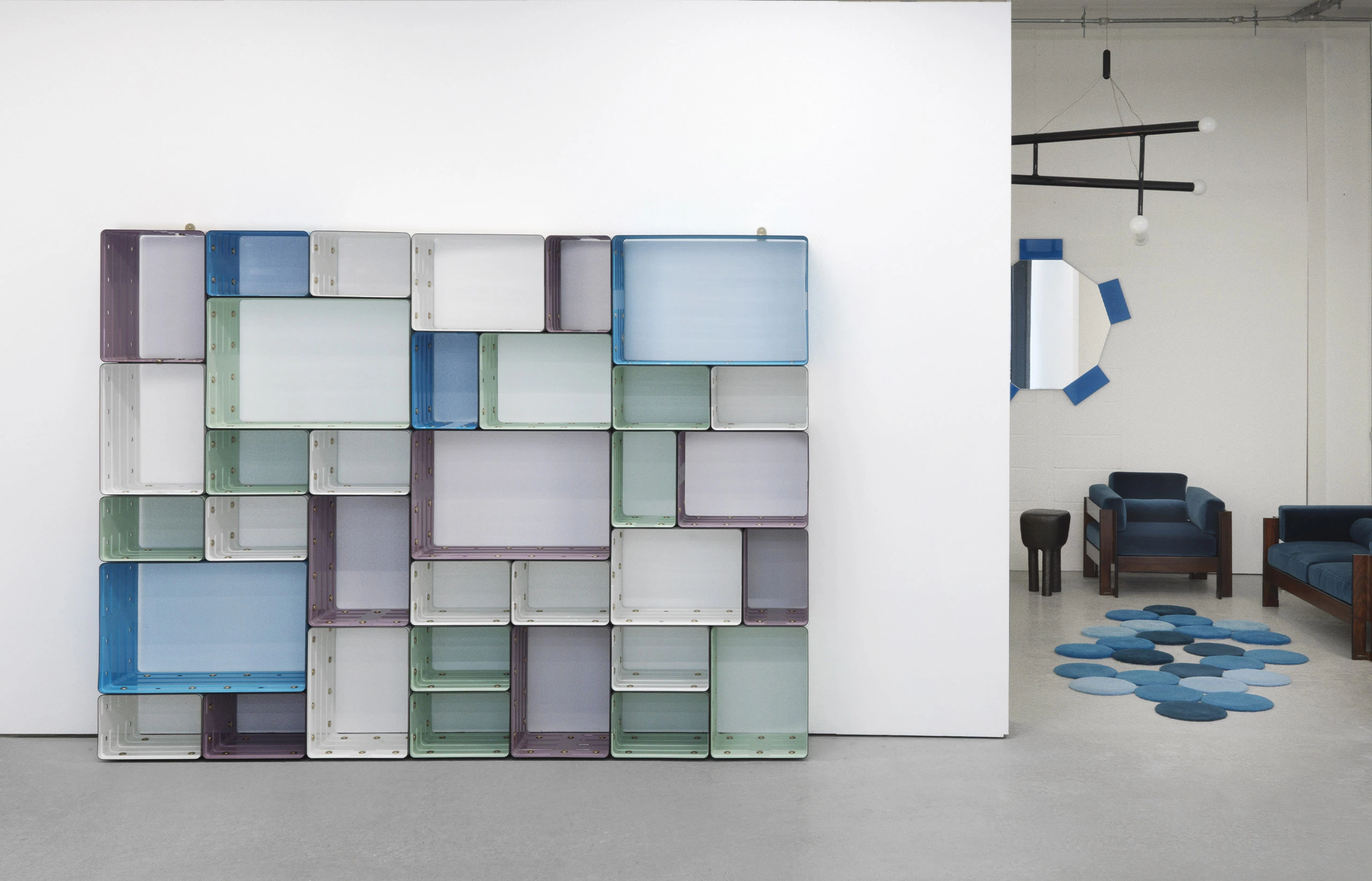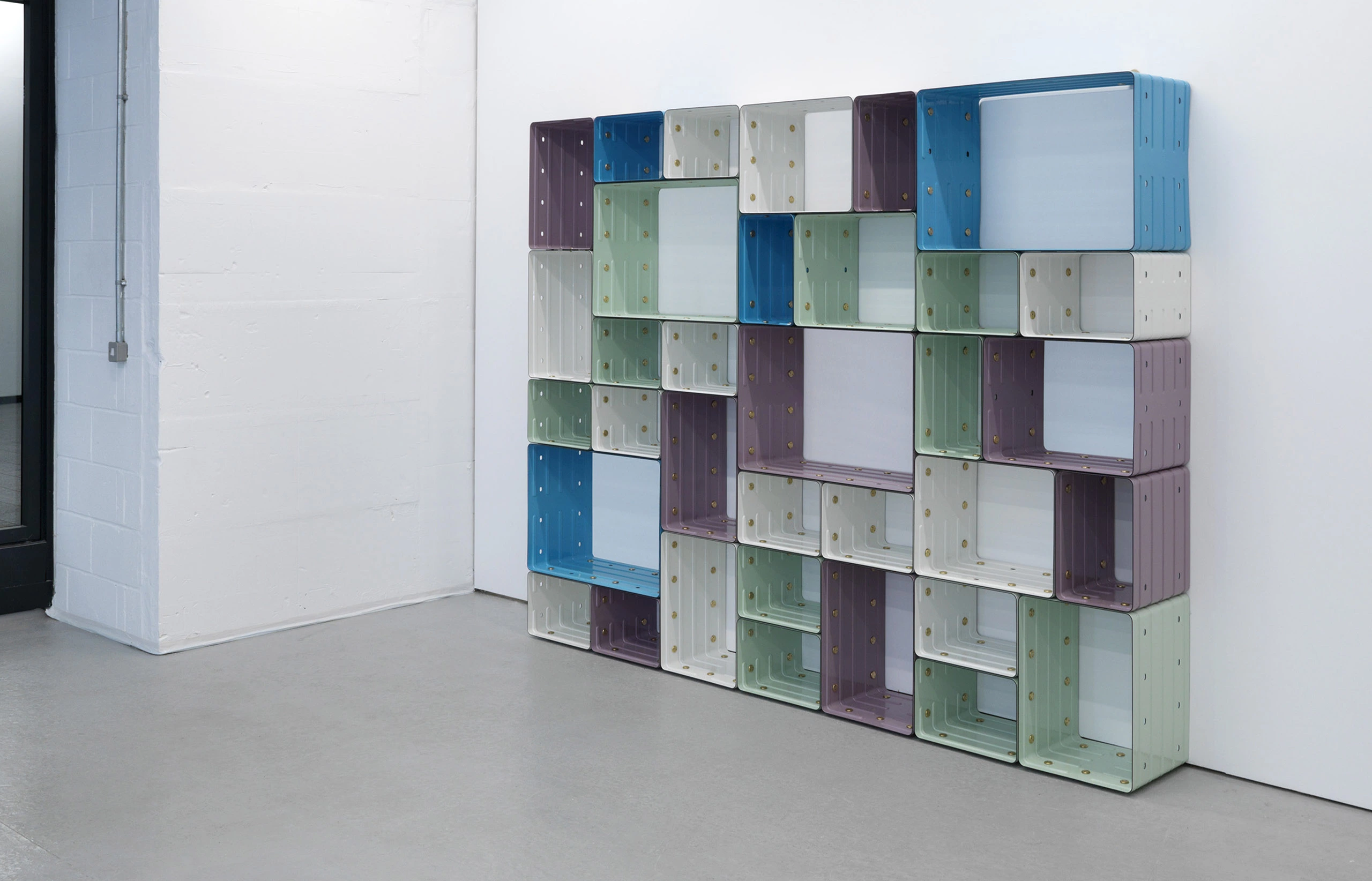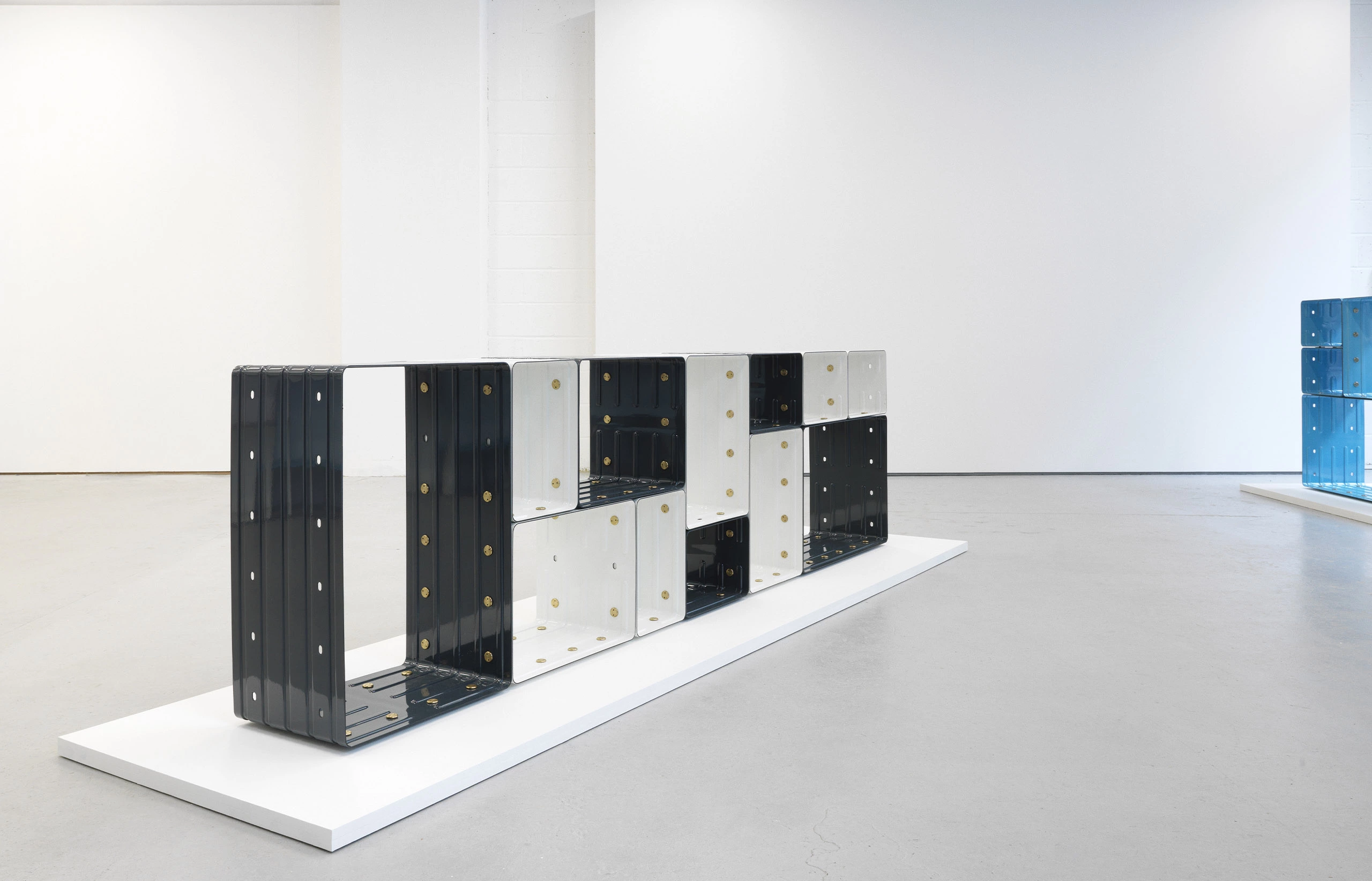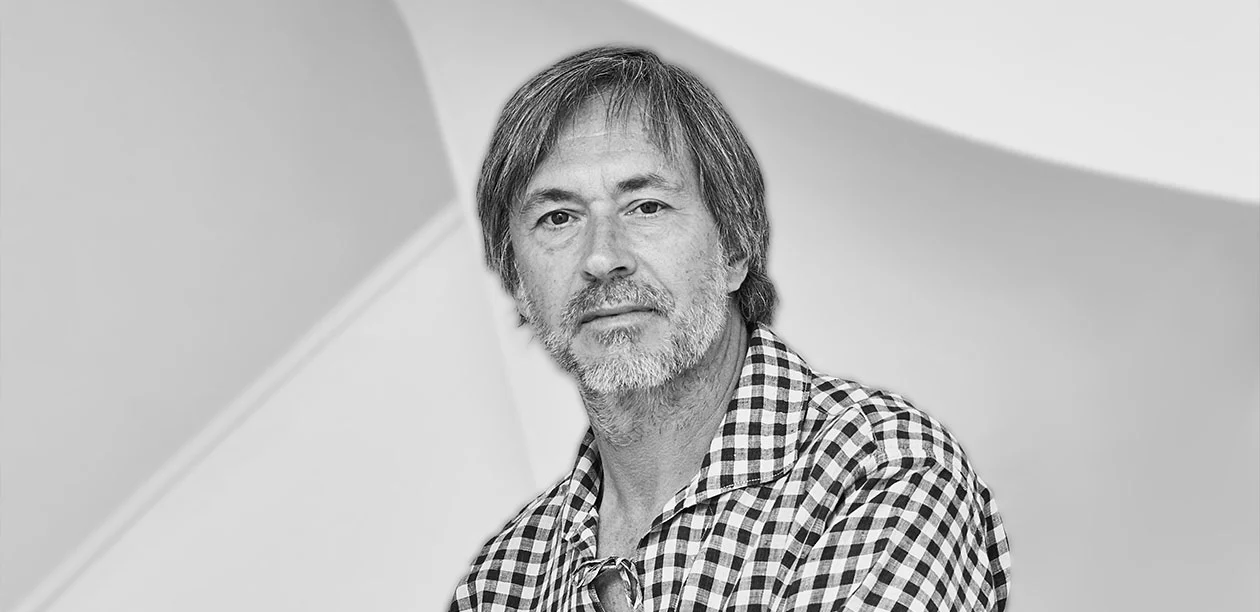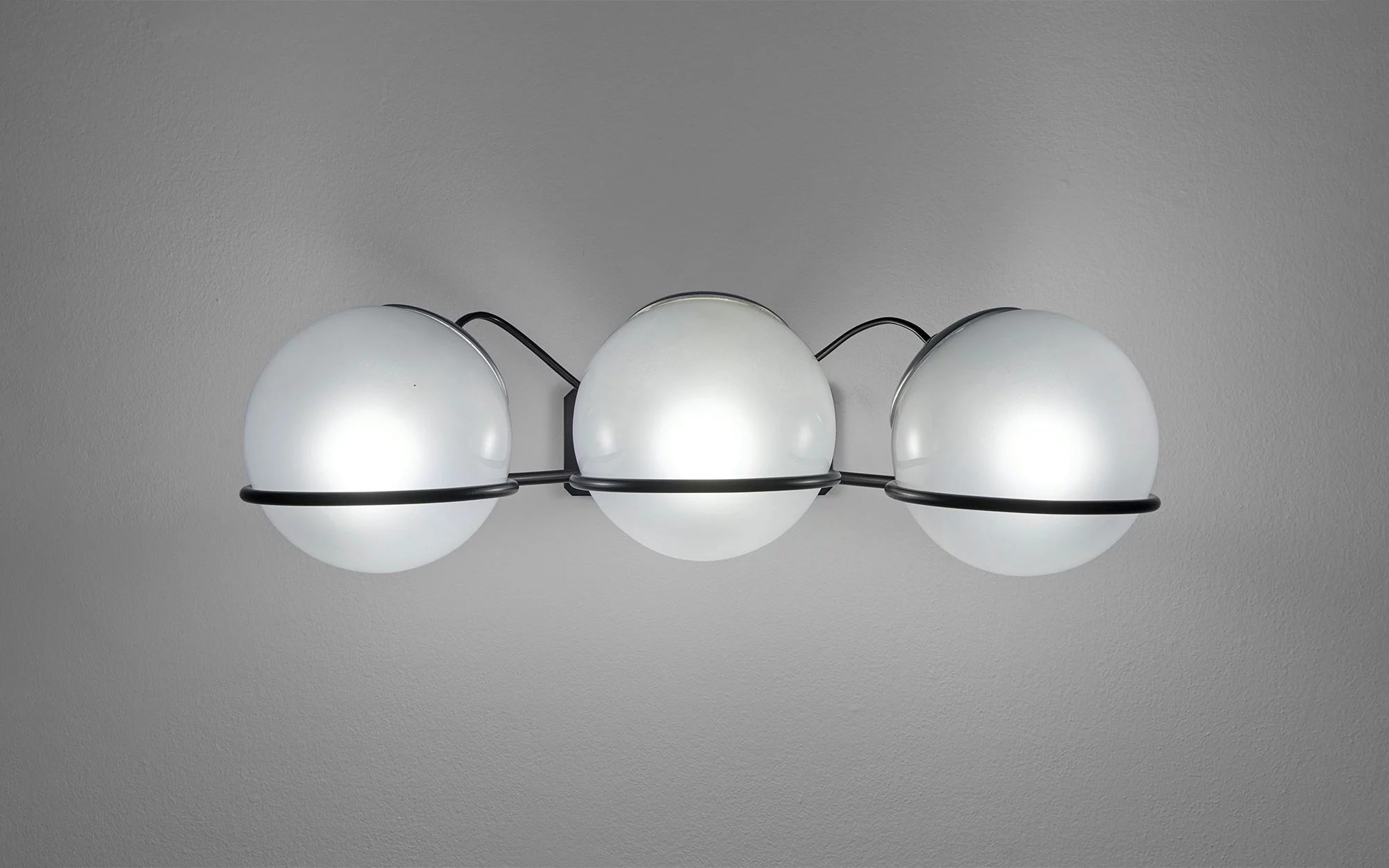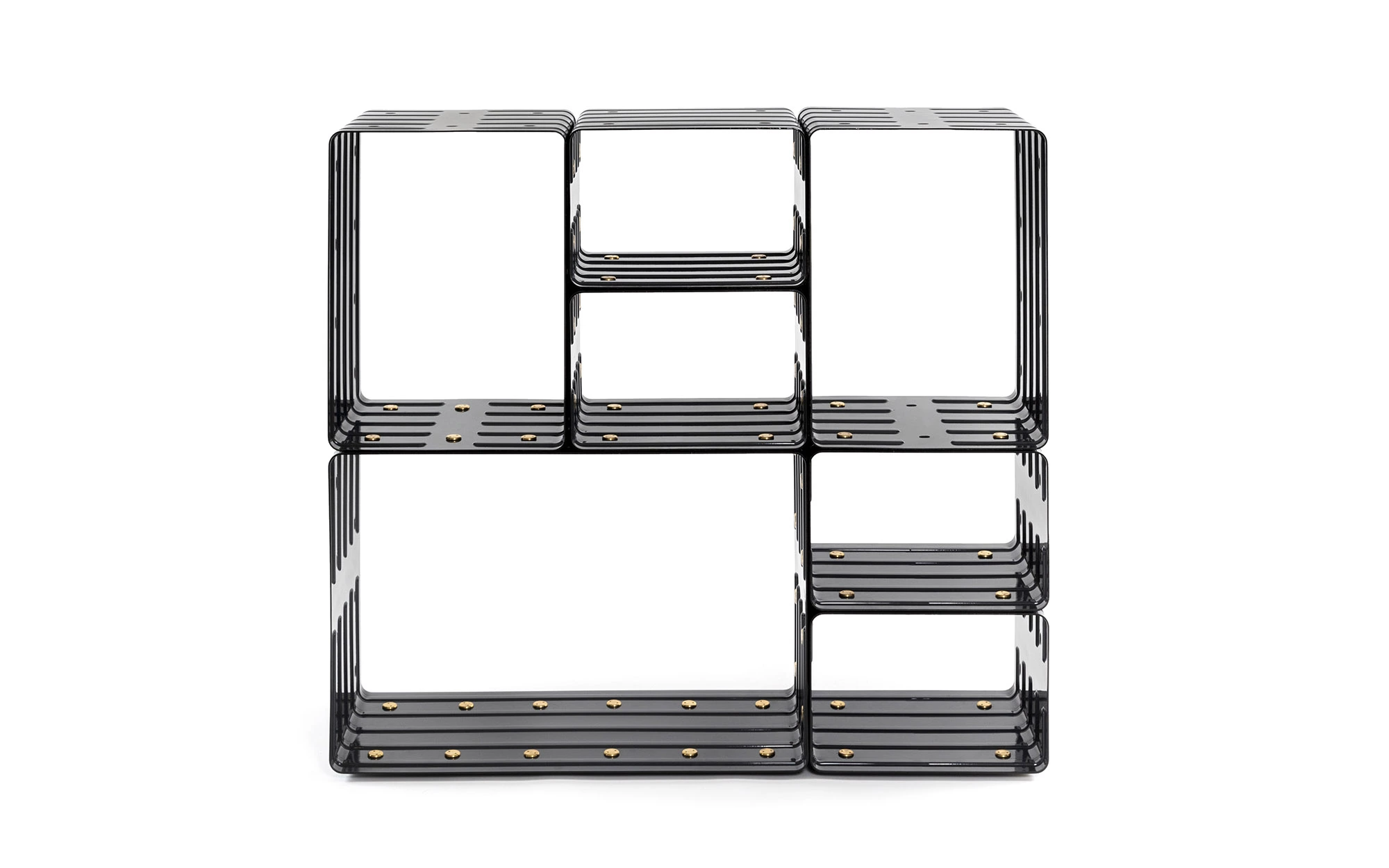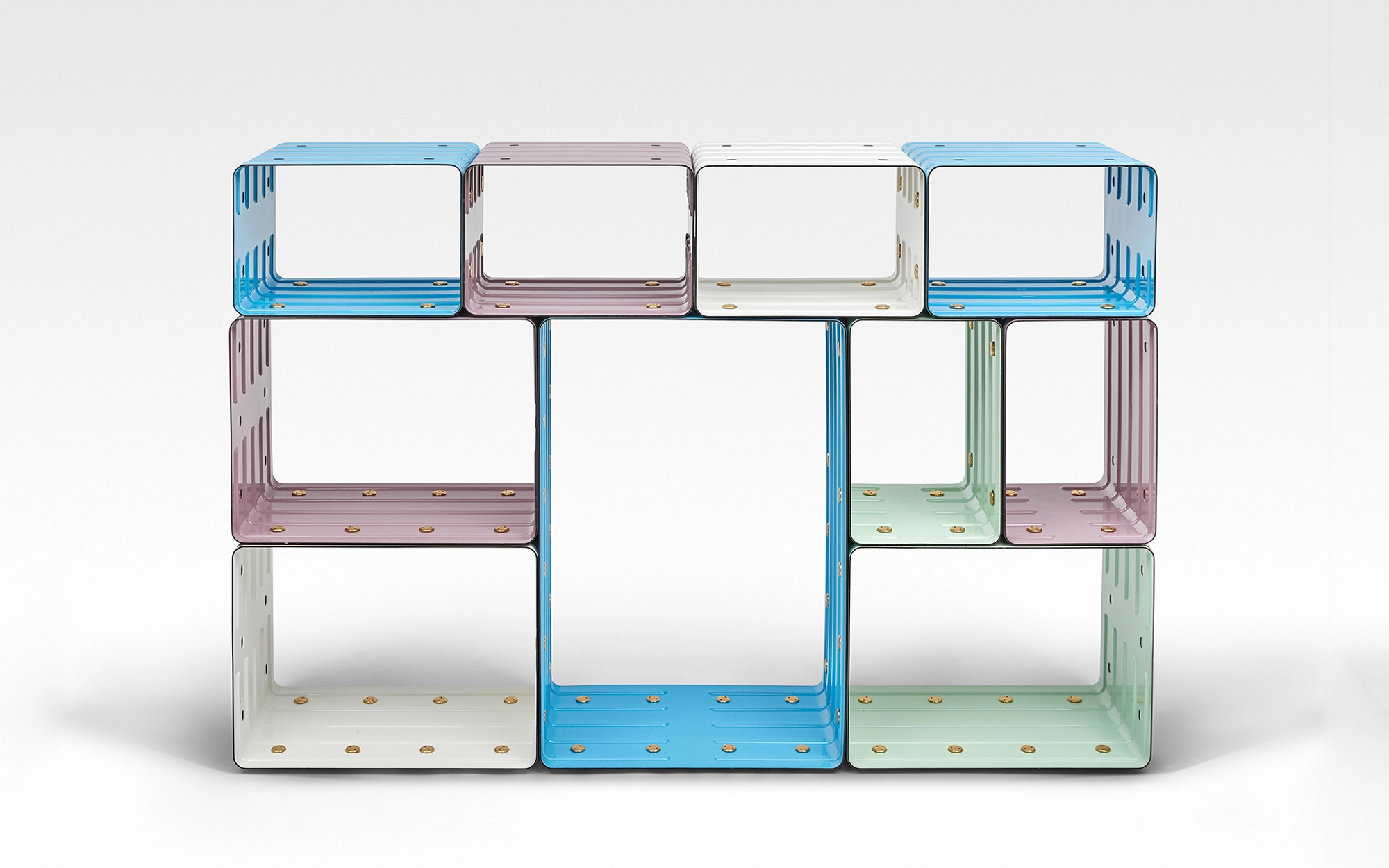Marc Newson unveils a new series of shelves entitled Quobus at Galerie kreo. A unique display of horizontal and vertical units, each bookcase is the result of a cadenced combination game, thanks to its modules of different sizes and colors.
There is a thread running through Marc Newson’s entire practice. Or rather two threads, complementary and recognizable. The first—which can be described as visual—makes each of his designs easily identifiable. It is a clear, straightforward, naturally curved line, which is both a silhouette and a drawing in space, where the contours of his pieces become subtle edges between the full and the empty, the inside and the outside, the context and the object, the form and its imprint. The second thread—structural—defines his way of envisioning design as a discipline of openness. Everything is visible, both the structure and the materials. The recurring principle of organic construction favors the creation of surfaces that are both homogeneous and rhythmic, simple to grasp. Yet, in an interview in 2000, Marc Newson declared a kind of program: “I hope to propose a series of objects, furniture, that is simply effective and aesthetic.” These two threads are always present and interconnected.
Rhythm, presence, lightness, visibility, and virtuosity of the constructive principle, the tension between full and empty: such is Marc Newson’s new series of shelves entitled Quobus—a neologism with a subtle Latin overtone created by the designer from the word “cube.” The result of research initiated for the commission of modular shelving for the Taschen bookstore in Milan in 2015, this series is characteristic of the designer’s practice. An object designed to contain other objects and therefore made to disappear in part, an object that can be extended or shortened according to the needs of the moment, Quobus adapts to different configurations, to the personality of each user, while materializing Newson’s distinctive visual and structural threads. The join of the modules perfectly exemplifies this. By zooming in on the way each unit is connected to its neighbor, one clearly feels the drive to underline the constructive principle through the deliberate use of round brass screws, the presence of a curved line softening the corners of each module, the rhythm created by the recurrence of the rivets and the rods of the steel structure. In this in-between space—almost a breath—vertical and horizontal lines meet to create the typical cells of any modular construction.
As for the production of the shelves, it is the result of a cross-artisanal process, carried out first in Italy and then in Belgium. As is almost always the case with Newson, the materials are key in his practice. Inspired by the personalities and possibilities of each material, his work includes techniques and processes, sometimes overlooked or “anachronistic,” employed in renewed ways. With enameling—a technique the designer has long been fond of—Quobus testifies to this anew. On a curved steel sheet envisioned as a canvas, a traditional vitrified and colored enamel is applied, a precise and organic process requiring numerous chromatic experiments to obtain the desired shades and intensities. Furthermore, each module only has one join, creating significantly stronger units that lend themselves better to enameling. Resolutely graphic in its black and white checkerboard version, or pastel with its celadon green, turquoise blue, and mauve colors specifically conceived by Marc Newson, Quobus is waiting for books and curiosities, like a “blank page” offered by the designer to collect your most beloved literary and material objects.
“Don’t judge a book by its cover” is the famous motto of any publisher going to a bookstore to observe the behavior of potential readers. The book designer, of course, relies heavily on the book’s exterior aspect, which must best reflect the content of a publication and seduce the future buyer. But what about the vessel that displays and contains the books before and after acquisition? This is the question answered by Quobus, thus reconciling through its formal and architectonic features the publisher and the graphic designer, the contemporary design enthusiast and the compulsive reader, fervently fond of thick books. Because, of course, Quobus is also extremely robust!
A proposal of limitless furniture, Quobus offers each of its users the striking cumulative effect of its golden rivets and a modularity conducive to all configurations.
Since Galerie kreo opened in June 1999, Marc Newson has presented three major exhibitions at the gallery in 2000, 2002 and 2004, as well as regularly showing his creations, including the iconic Carbon Ladder (2008). In 2014 he joined Apple as Designer for Special Projects, most notably as part of the design team for the Apple Watch. In 2017 he received the Lifetime Achievement Award at the Salone del Mobile in Milan. Collaborating regularly with prestigious brands and companies in many fields (Qantas Airways, Louis Vuitton, Montblanc, Nike, Jaeger-LeCoultre, Beretta), Marc Newson is recognized as one of the most influential designers of his generation. Born in Sydney in 1963, he has lived and worked in Australia, Japan, France, and the UK, where he now resides. The catalogue raisonné of his limited-edition pieces is currently being edited by Didier Krzentowski.
